Get Familiar With These 11 Parts of a Deck Before You Start Building
Footings and flooring and flashing, oh my!


Posts, beams, and blocking provide support under your decking.
Flashing between your deck and house protects your home from the elements.
The ledger board connects your deck to your house and adds stability, making it a vital component.
Unless you’re a skilled carpenter, it’s best to hire a pro to build your deck.
Adding a deck is a fun way to upgrade your outdoor space, but it’s also quite an undertaking. There’s a lot to think about—including the size, layout, location, and decking material that’s right for you. Understanding the basics of constructing a deck, including the parts of a deck and the purposes of each one, can make the process easier. Before bringing in a deck builder, get up to speed with the must-know deck components below.
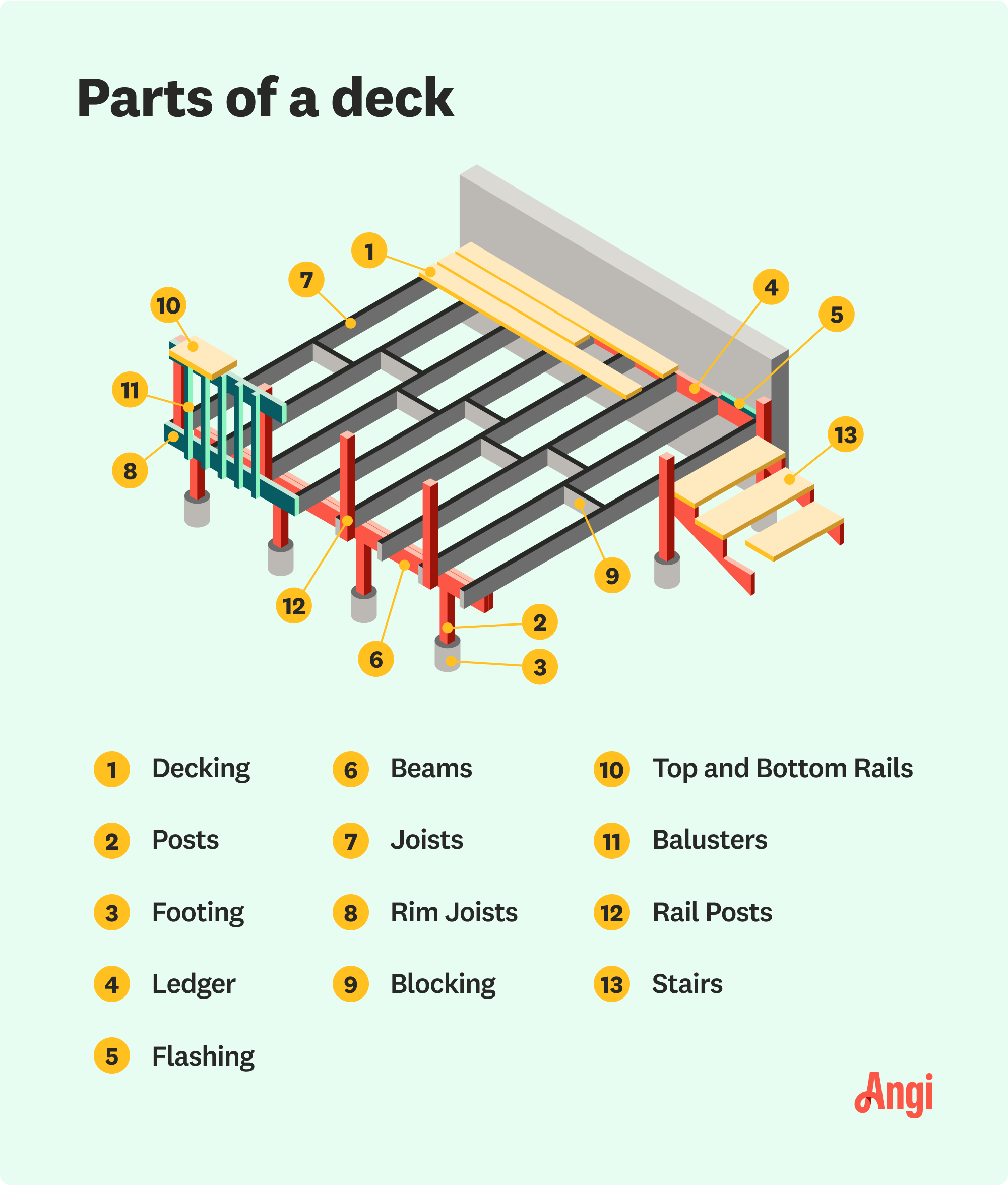
1. Decking
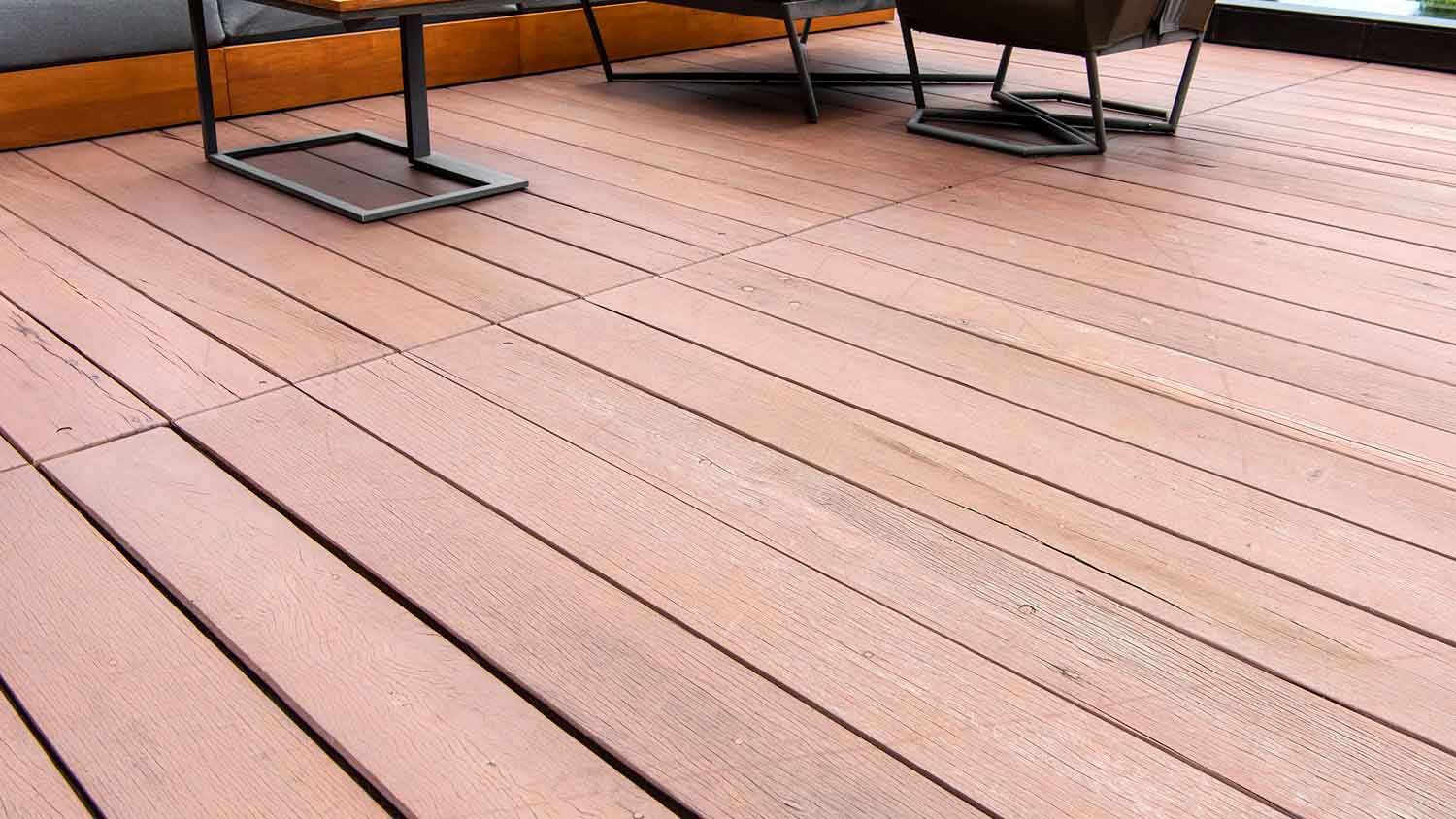
Decking—also called deck boards or deck flooring—is the most visible part of your deck. It sits on top of structural components (like the joists and bridging), creating a flat surface to walk on and support your outdoor furniture. You can choose from several decking materials, including wood, composite, PVC, and aluminum.
Laying the decking is one of the final steps in the deck-building process. If you choose wood decking, be sure to let it breathe and acclimate to your local climate for about a week before laying it down. This makes the wood less likely to cup, warp, or buckle after installation.
2. Footings
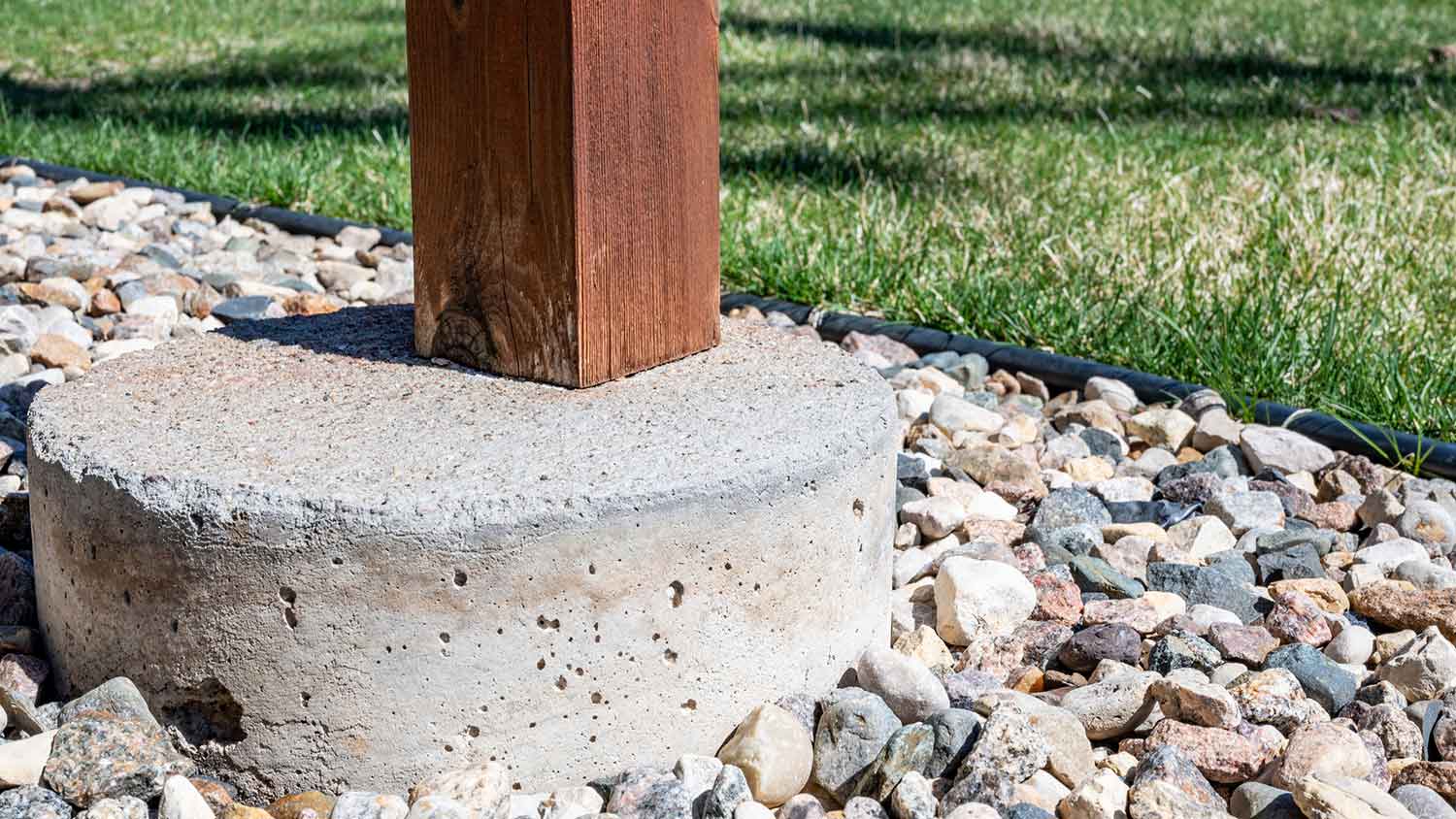
Footings reach into the ground, holding up your deck posts and supporting the weight of your deck. In most cases, footings are made from concrete, but there are other types of deck footings.
Because footings form the very bottom layer of your deck, they’re the first thing to install when constructing a deck. For installation, your contractor will dig a hole in the ground (at least 12 inches deep) and then pour concrete to create the footing. Depending on where you live, you might be able to install deck footings without digging, but you’ll need to check your local building codes to confirm.
3. Posts
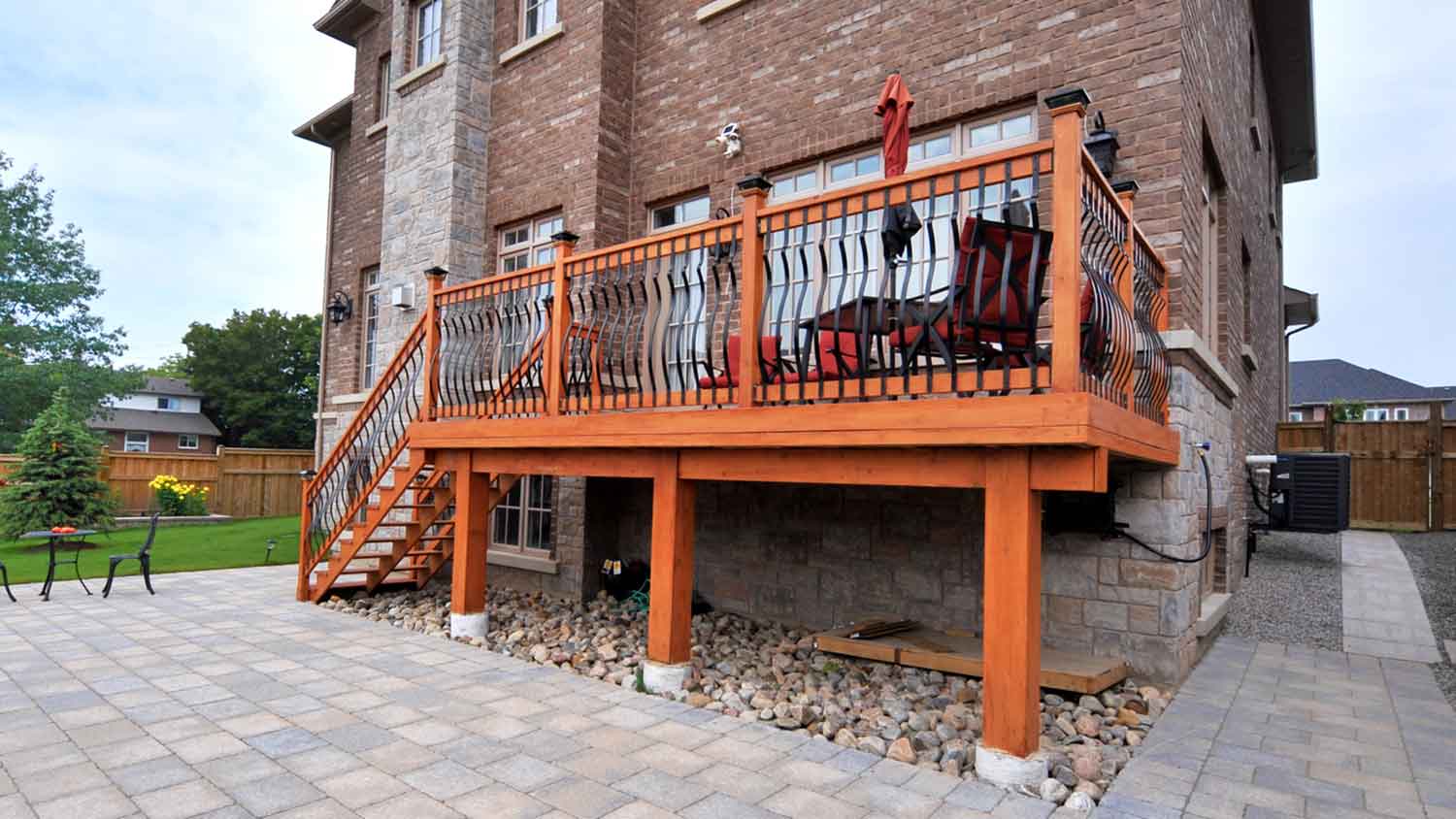
Posts are pieces of timber that run vertically and help hold up the weight of your deck. The bottom of each post connects to a footing using pieces of metal called post anchors. At the top, the posts attach to the beams that frame your deck.
The length of your posts directly impacts the height of your deck (taller posts equal taller decks). Having more space between your deck and the ground also promotes better airflow beneath it. Without proper ventilation, moisture can build up and damage wooden decks.
4. Railing System
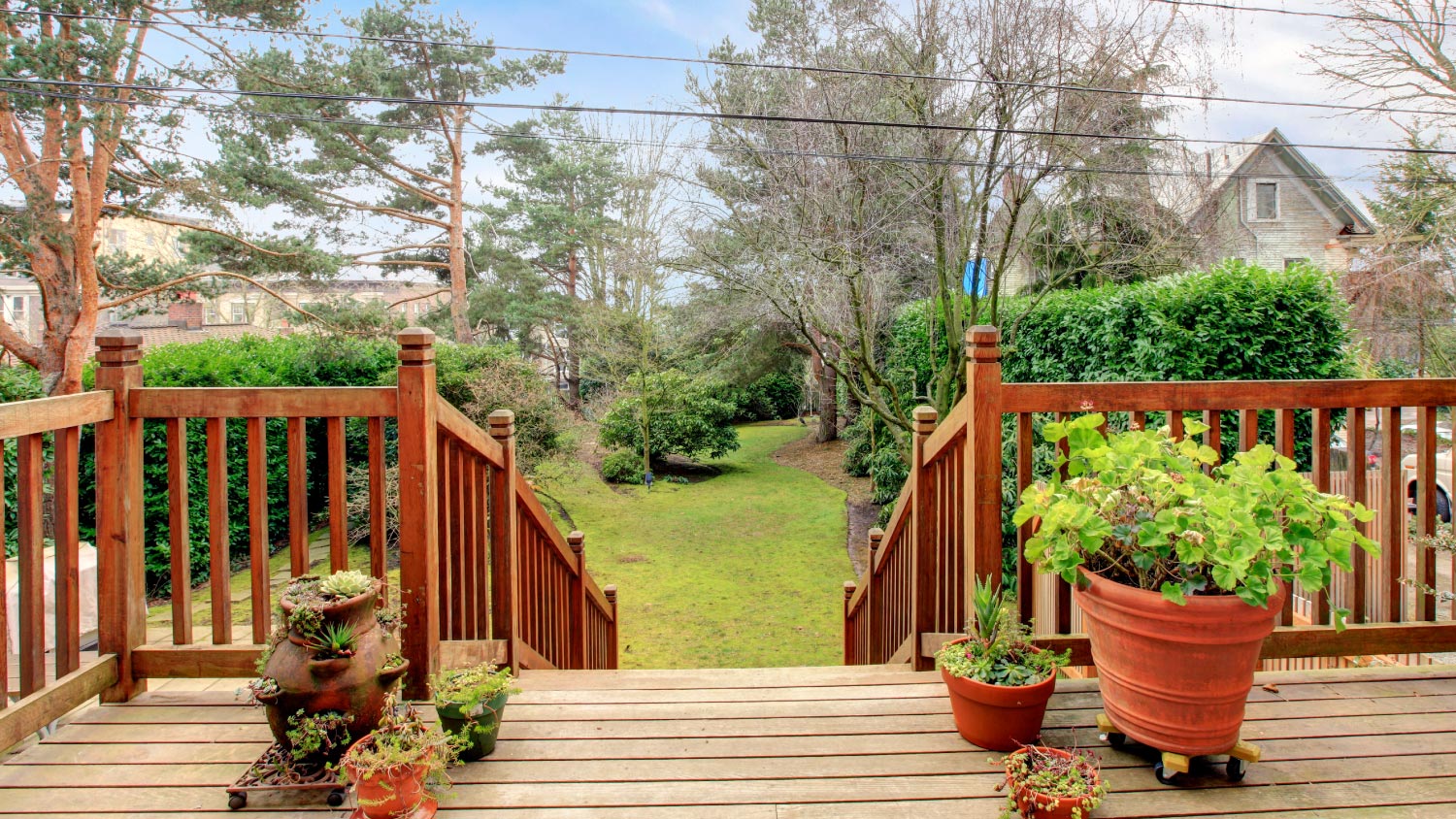
If your deck is a certain height (30 inches off the ground), your local building code may require you to add a railing system as a safety measure. But even if you aren’t legally obligated to, installing one is still a good idea to keep your family safe.
Deck railings have several components, including:
Balustrades: As the top and bottom rails, balustrades act as the frame of your railing system.
Balusters: Also known as pickets or spindles, balusters are the vertical pieces that run between the top and bottom rails.
Rail posts: Not to be confused with the support posts under your deck, these sturdy vertical posts run parallel to the balusters and connect to your deck frame or deck surface to support the railing system.
Rail or top cap: These boards create a flat surface above your top rail so that you can set drinks or planters on your railing.
5. Ledger Board
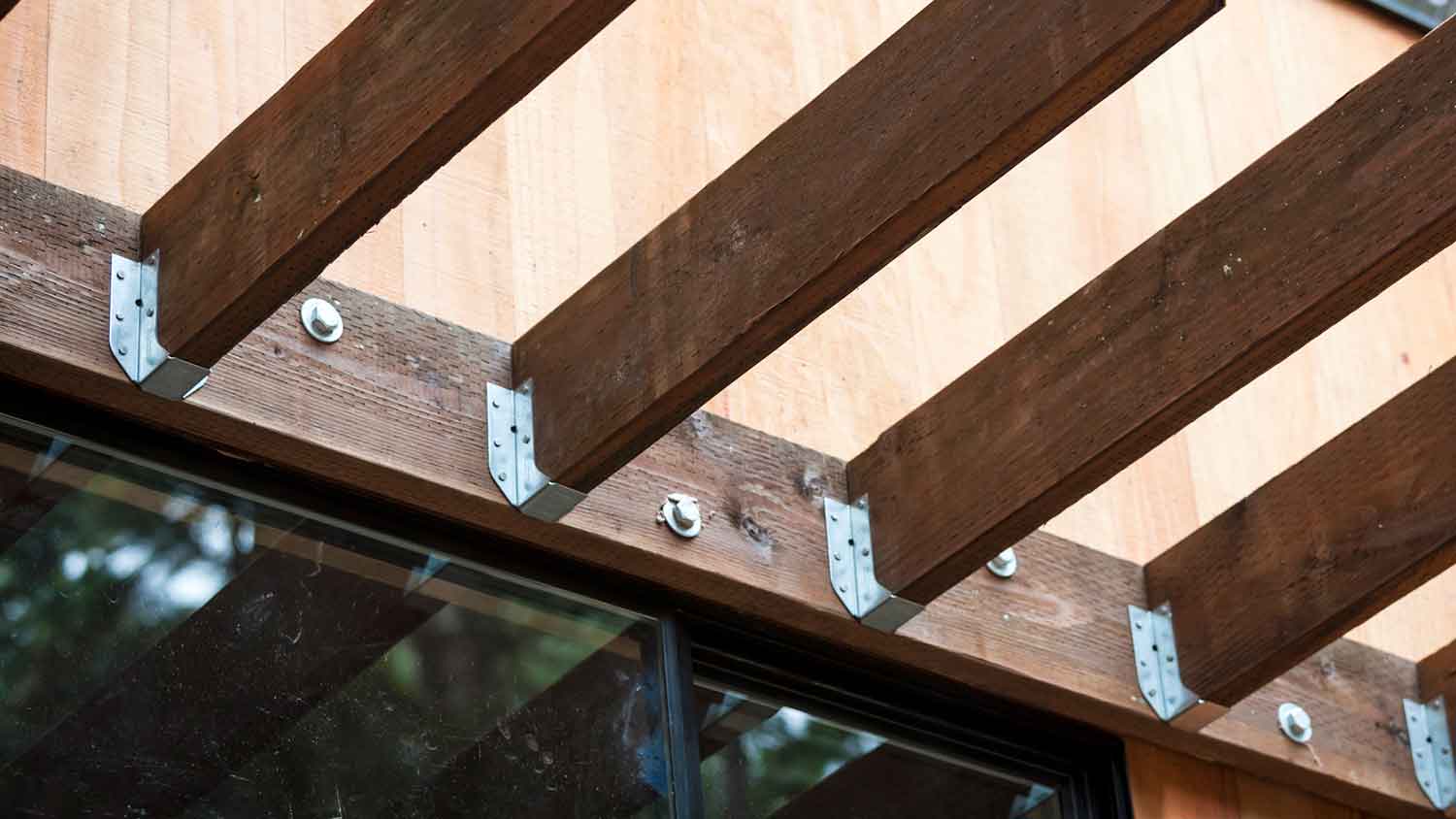
A ledger board is a long piece of wood that connects your deck to the side of your house with bolts or screws. Ledgers distribute some of the deck’s weight to your home’s frame, making your deck more stable and supported. Most decks, except for freestanding ones, require a ledger board.
6. Flashing

If you have a ledger board, you’ll also need flashing—a sheet of stainless steel or vinyl that fills the gap between the ledger board and your house. Flashing acts as a waterproof barrier to stop rain, snow, and moisture from reaching your home, preventing damage, rot, and decay.
7. Beams
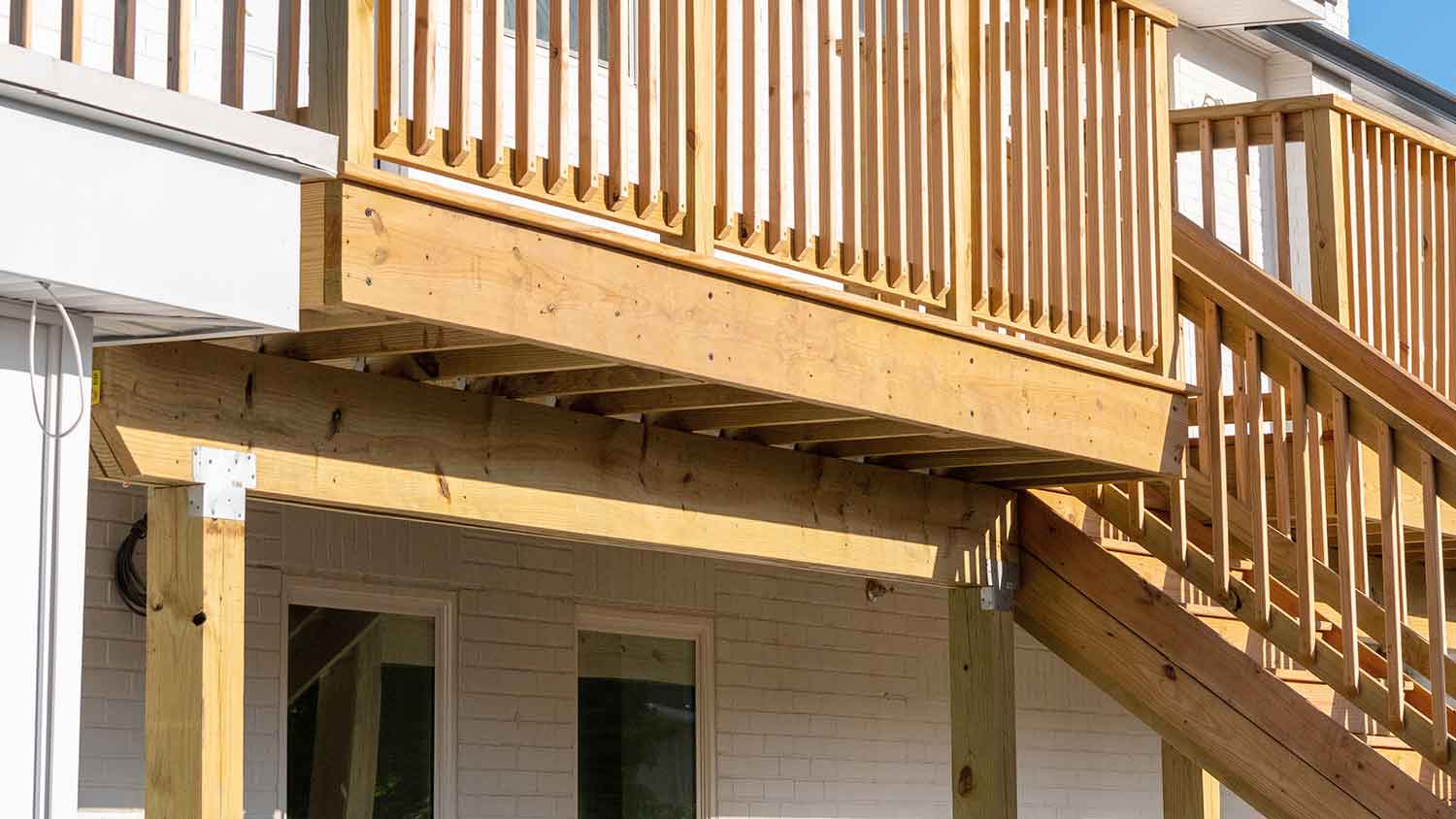
Beams—also called girders—are horizontal boards that sit on top of the posts. They run parallel to the ledger board and form the outside edge of your deck frame on the side that’s furthest from your house. (However, if you have a large deck, you may need another beam in the middle of your frame for additional support.) Beams are sturdy sources of support for the deck parts above them, including decking and joists.
8. Joists and Rim Joists

Joists are like the skeleton of the deck, providing structure and support underneath the deck boards. Interior joists are perpendicular to the ledger and beam and have 12 to 16 inches of space between them. The joists on the deck frame’s perimeter—which are visible from the side—are known as rim joists.
9. Blocking
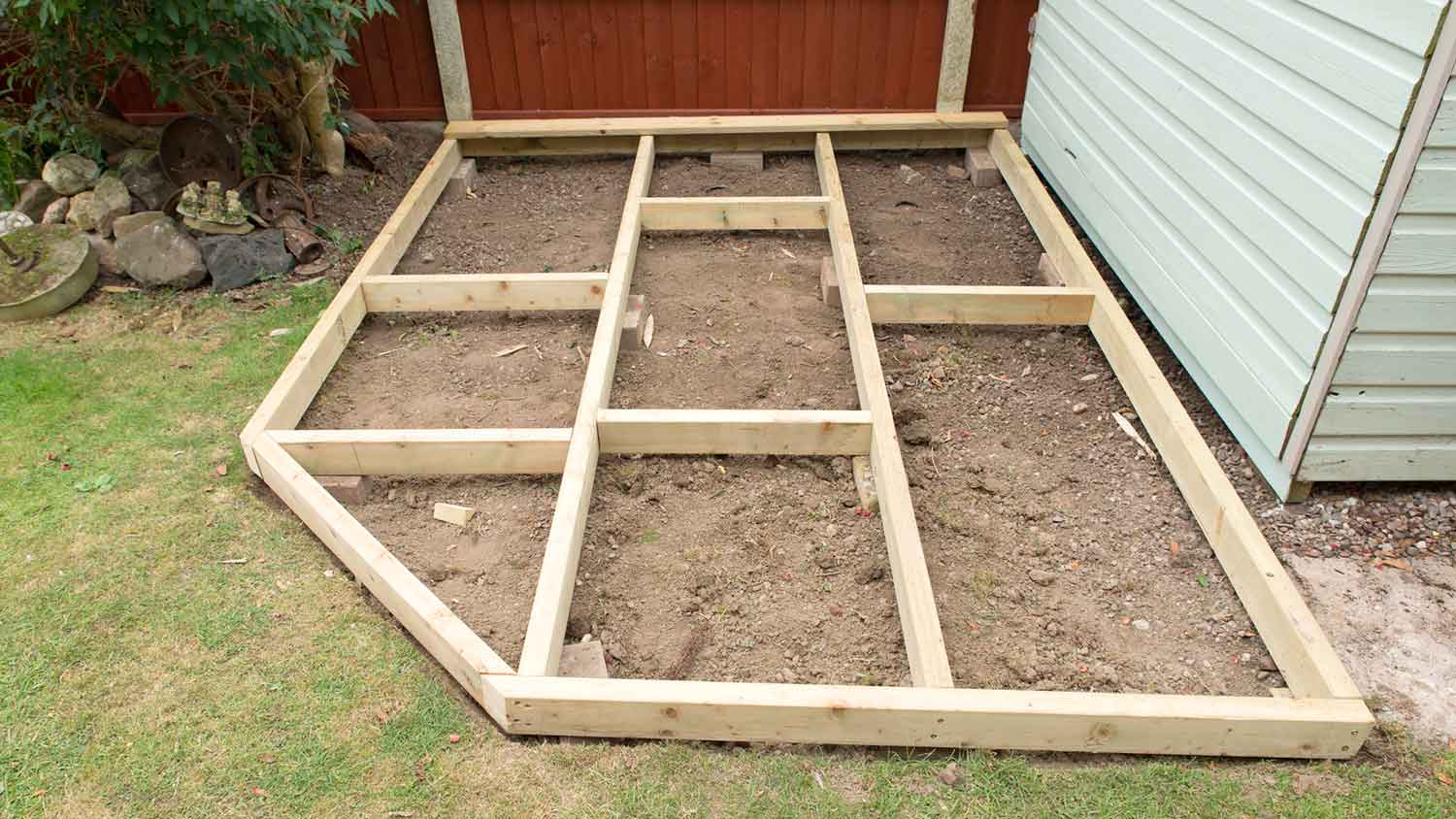
Blocking—sometimes called bridging—is the smaller pieces of wood that run between joists. They help make the deck more stable and prevent joists from warping. Blocking also offers more strength for attachments like stairways and railings.
10. Stairs
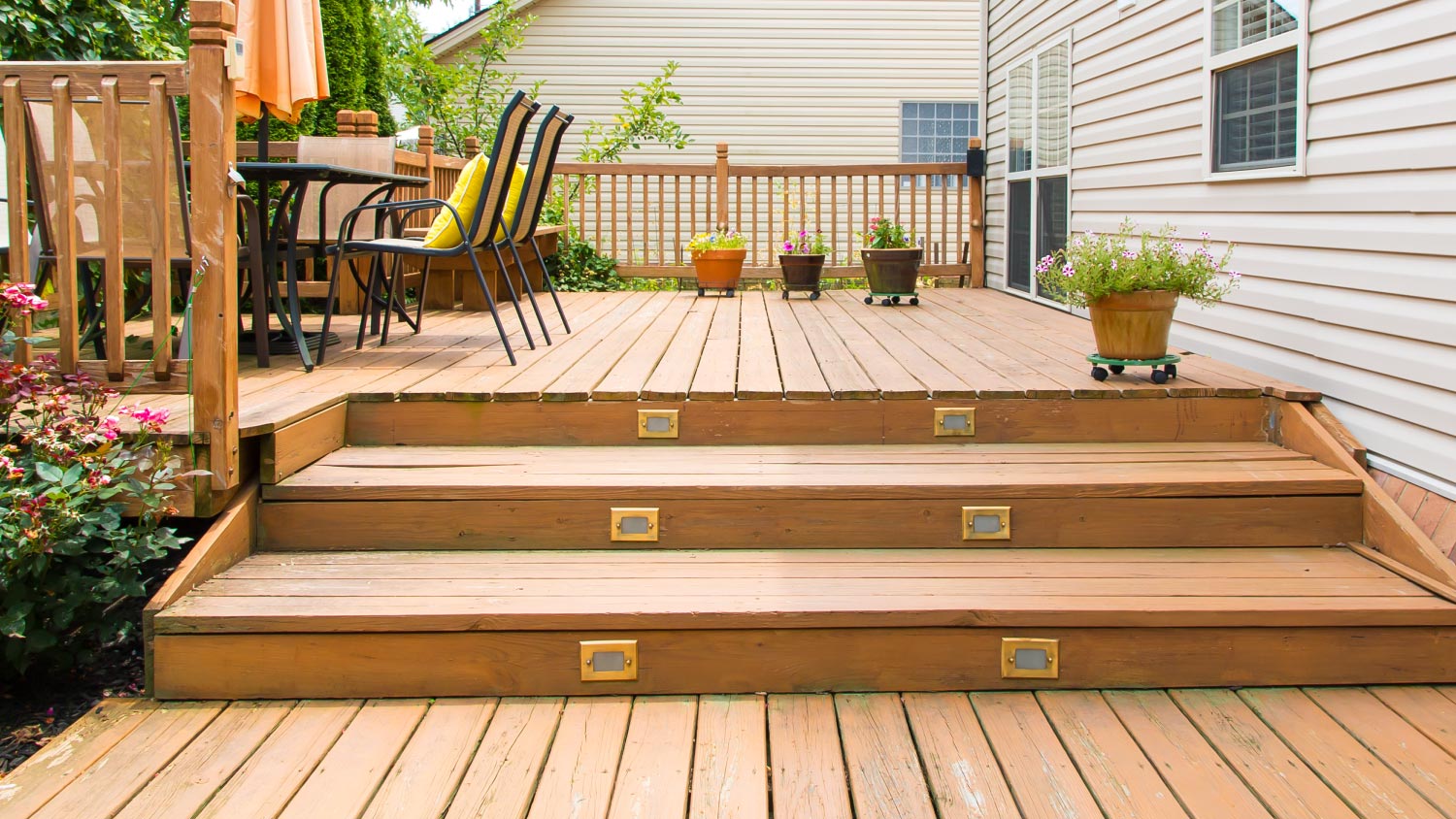
Deck stairs connect your deck to the rest of your backyard. They consist of several parts, including risers and treads (the vertical and horizontal parts of your steps, respectively) and stringers (the boards that run upward along the sides of your stairs).
Depending on where you live, you may also need to create a landing pad at the bottom of your stairs. People often use poured concrete or pavers for a landing pad, but check your local building code to see which materials you’re allowed to use.
11. Pergola or Gazebo
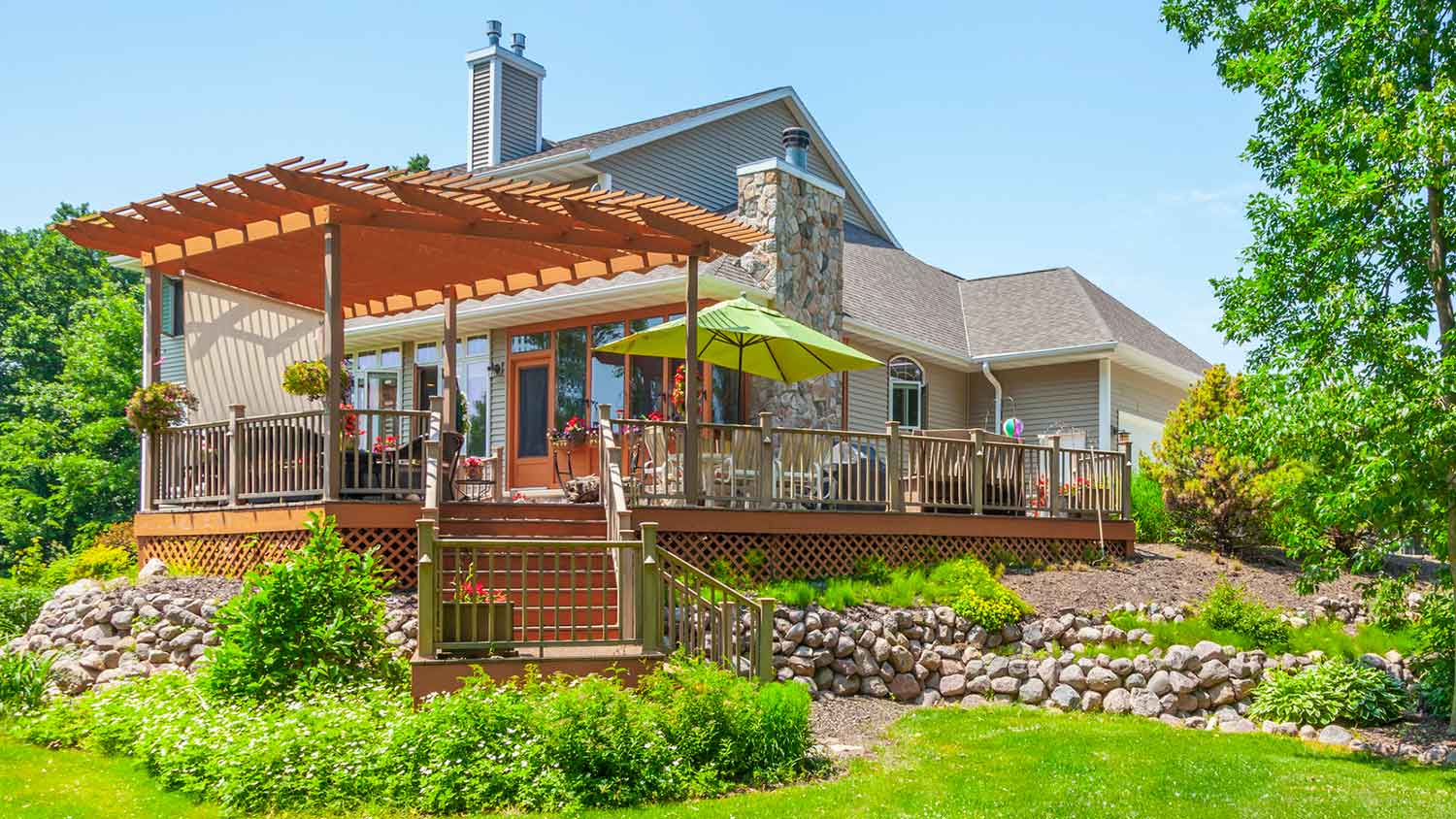
While they aren’t essential parts of a deck, pergolas and gazebos make great additions if you want a bit of shade or privacy for your outdoor space. With their grid-like design, pergolas provide a moderate amount of coverage for your deck and create a place to hang up lighting or a speaker system.
Building a gazebo on your deck costs more than adding a pergola, but it also offers much more protection from the elements, thanks to its solid roof. However, some wooden decks can’t support the weight of a gazebo, so you might want to consult a pro to discuss alternative options.
How to Maintain the Different Parts of a Deck
Keeping your deck looking great and structurally sound doesn’t have to be complicated. With a few simple habits, you can preserve both its beauty and durability.
Start by sealing and staining your deck every couple of years. This shields the wood from harsh UV rays and moisture—the main culprits behind fading and warping. In between, stay on top of everyday maintenance by sweeping off debris and giving it a thorough wash each season to prevent mildew and grime from building up.
As you go, look for loose boards or nails. A quick tap with a hammer or a few minutes with a power drill can save you future headaches and costly maintenance. If you notice any cracks or splinters, sand them down and apply wood filler to prevent them from spreading.
For bigger issues, like cracked beams or sagging joists, it’s best to call in a professional deck builder. They’ll ensure that repairs meet safety standards and keep everything up to code. Regular maintenance goes a long way, especially if you want to keep your deck safe and sturdy enough for year-round use.
Building a Deck Yourself vs. Hiring a Pro
Building a deck is no small project. Before you begin construction, get familiar with local building codes and permitting requirements, create a detailed design, figure out which tools and materials to buy, and get your design approved by your local permit board (if necessary).
If you have a good amount of carpentry experience, this might not seem too daunting. Otherwise, you’re better off calling an experienced local deck builder. Hiring a professional to build a deck costs $4,350 to $12,400, with most people paying around $8,100.
By tackling the job yourself, you could save between $15 to $35 per square foot on labor, which adds up to thousands of dollars on an average-sized deck. But between the prep work, time commitment, and experience required to design and build a safe deck that’s up to code, working with a pro is your best bet.
Frequently Asked Questions
When installing deck boards, screws are a better option than nails. For one, screws have more holding strength than nails, so they’re better at keeping your deck boards in place. Also, nails are more likely to pop out of the boards than screws, which can create a tripping or poking hazard on your deck.
A deck that isn’t attached to a house is called a floating or freestanding deck. These standalone decks are built near ground level, so they usually don’t need deck stairs. Some don’t even require permits. Generally speaking, building a floating deck is faster and more DIY-friendly than constructing one that’s connected to your home.


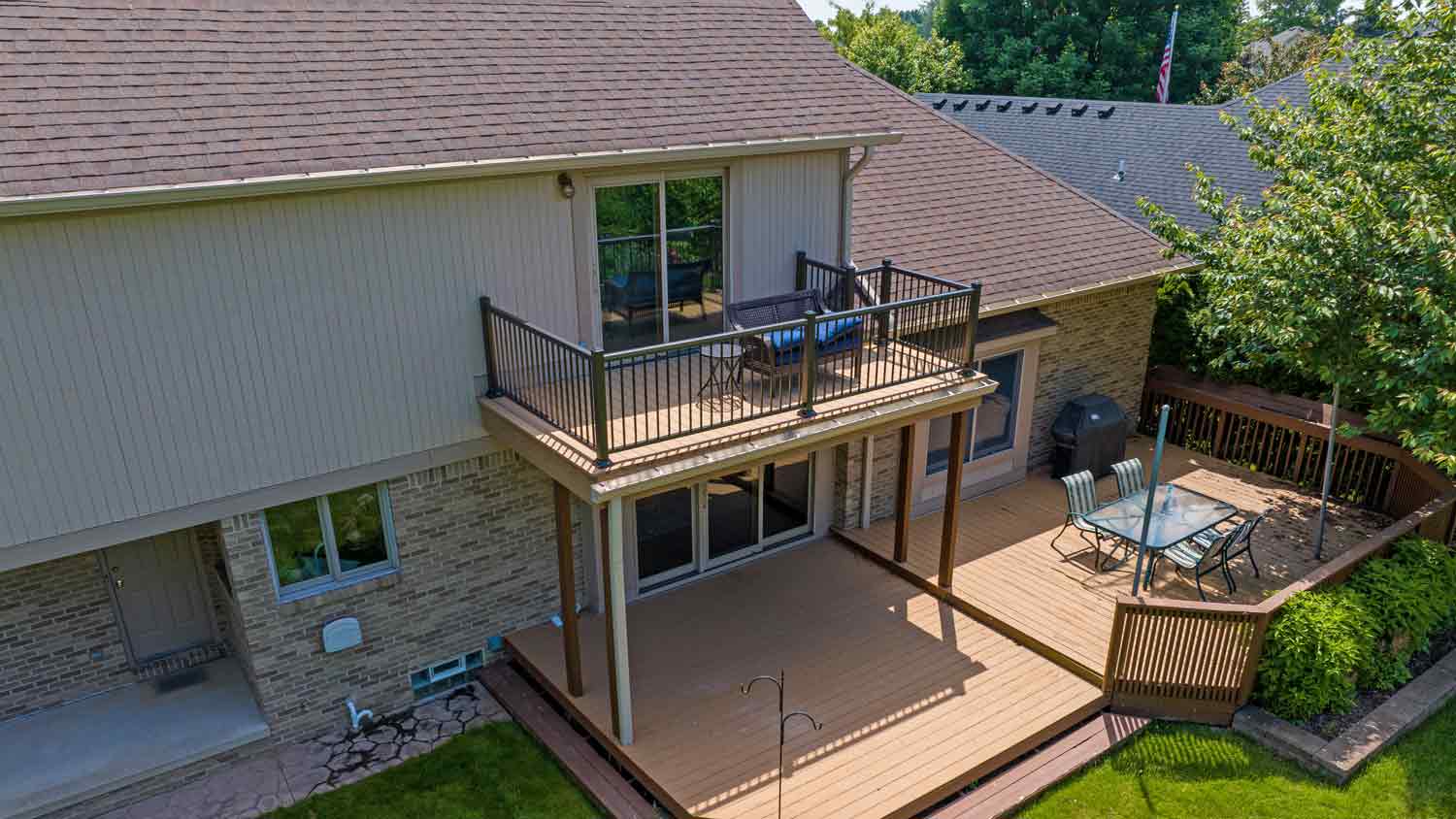

- How to Build a Deck You'll Love for Years to Come
- Planning for Decking: Everything You Need to Know to Add a Deck to Your Home
- Top Deck Maintenance Tips for Every Decking Material
- 3 Top Options for Deck Footings Without Digging and When to Use Them
- What Is Deck Flashing and Why Is It Important?
- What Size Deck Can I Build Without a Permit?
- How to Build a Pergola on a Deck for a Shady Oasis
- 20 Deck Lighting Ideas to Brighten Up Your Outdoor Living Space
- When Is a Railing Required on a Deck? Safety Laws You Need to Know
- 24 Hot Tub Deck Ideas for a Backyard Paradise










